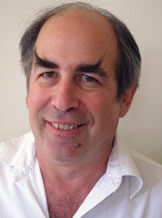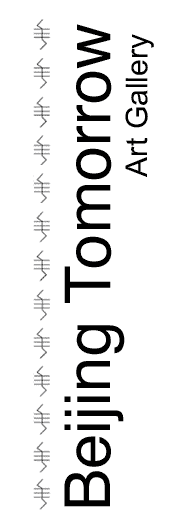 |
Andrew Werby graduated from the University of California in 1974 with a BA in Design. Afterwards he continued his education privately and at various institutions, learning holography, glass-blowing, video and film-making, sculpture, ceramics, machine shop, kiln-cast glass, and electronic prototyping. He first developed his “Juxtamorphic” style by making molds from specimens in the University’s Paleontology, Geology, and Anthropology departmental collections, combining the resulting castings to create cast bronze and aluminum sculpture. He later went on to found the Juxtamorphic Art Movement, with other artists finding new ways to use nature in art, which mounted self-curated group shows in Berkeley, San Francisco, and Seattle.
In 1975, he founded United Artworks, a company dedicated to the design and production of sculpture, jewelry, and architectural accessories. In 1997, he began experimenting with the adaptation of computer technology to his working process, applying scanning, modeling and milling operations to the creation of fine art. His personal work in this field includes applications of the Juxtamorphic aesthetic to digitally mediated jewelry, ceramics, woodcarving, plastics, and sculpture.
安德鲁·沃比于1974年毕业于美国加州大学伯克莱分校, 后又师从多位艺术家, 学习全息摄影、玻璃吹制、视频制作、雕塑、陶艺、金属加工、彩色泥塑、电脑美术、埚窑工艺、玻璃窑炉技术、陶瓷壳青铜铸造以及计算机建模。沃比目前 主要从事雕塑、陶艺、景观建筑、产品设计以及环境设计等工作。他发展了“临近形态”的雕塑风格,即从古生物学、地质学和人类学标本中提取模型,糅合不同形态与纹理, 来创造铜、铝质地的雕塑。他的作品曾多次参加在伯克莱、旧 金山和西雅图等地举办的群展。
1975年, 沃比创办并开始经营“艺联”公司, 主要业务为设计、生产及销售艺术品, 产品涵盖珠宝、雕塑、以及建筑配 件等。1997年, 他开始将计算机技术应用到三维艺术创作中, 大量使用扫描、建模和电脑雕刻等技术。以计算机为特征 的“临近形态” (Juxtamorphic) 美学被沃比应用到各种艺术产品的创作中, 其中包括首饰、陶瓷、木材、塑料以及雕 塑。
主要展览:
2003年10月 “花团锦簇”, 由3部分组成的浮雕画, 展示于加利福尼亚州伯克莱的Berkeley Bowl市场橱窗 2001年3月 “世界树”,12英尺浮雕画,加利福尼亚州伯克莱的Berkeley Bowl市场 1990年8月 为加州圣马迪欧的Duayne Weinger家宅完成一座高6英尺的喷泉,材质为青铜、孔雀石、钢丝网水泥 1982年5月 “螺旋豆荚”, 10英尺高青铜雕塑, 灵感来源于植物自然生长形态, 现位于加州圣马迪欧Grosvenor花园公寓前
|
|
ARTIST STATEMENT:
I’m very enthusiastic about the use of digital technology in sculpture, and have retooled my sculpture process to take advantage of some of the things it makes possible. I started out by taking molds of natural objects, casting them in wax, and assembling composite objects which were then remolded and cast in various materials.
Now I do essentially the same thing by digitizing natural forms and textures with 3d scanners, then combining them in the computer using haptic (force-feedback) modeling tools. This gives me greater freedom in merging forms, as scale is no longer an issue, and shapes can be modified more easily. These composite assemblies are then produced as physical sculptures by using either computer-controlled milling machines or additive 3D printers. By using a color-capable 3D printer, I’m able to apply photographic textures, also based on images from nature, to the surfaces of my pieces, which gives them yet another level of detail. This method of working also allows me to produce maquettes, small models of proposed larger sculptures, for presentation that exactly resemble the final product, something that wasn’t possible with my earlier technique, which always was tied to full-sized objects.
While this technology, like most new ways of doing things, can be used to perform traditional tasks like the enlargement of small models to monumental size more efficiently, what excites me more is the possibility of doing things that couldn’t be done at all before. That, for me, is where the untapped potential of these new tools is to be discovered. And by working exclusively with natural forms and textures and concentrating them into art objects, I feel I’m helping to awaken people to the intrinsic beauty of the world that created us, which is so much richer than the world that we’ve created. |
|
艺术家的话:
我十分热衷于在雕塑中使用数字科技。数字科技改变了雕塑创作过程, 更便于解决很多雕塑技术难题。在先前以人工为 主的雕塑创作过程中, 我先选出自然实体的造型, 将其铸成蜡模, 然后混入其他创作元素重新铸模, 最终选取不同的雕 塑材料浇铸出成品。
现在, 我的雕塑制作在本质上和以前是一样的。我用数字化三维扫描仪把具有自然形式和质地的实物扫描下来, 再用手 动建模工具在计算机里将它们组合在一起, 最后用程控铣床将其雕刻出来。数字的雕塑创作过程让我能更加随意地进行 物体的组合, 不必受尺寸的限制, 也便于反复修改。另外, 数字化的雕塑方法让我能够随时打印出最终雕塑效果图, 更 弥补了人工雕塑技术的缺憾。
与众多现代科技一样, 数码雕刻也在提高工作效率方面成果显著, 它能瞬时间缩小或放大模型。然而真正让我为之雀跃 的则是它攻破了许多手工雕塑无法实现的技术难题。对我而言, 那才是数码雕刻的魅力所在。
|
|
|





